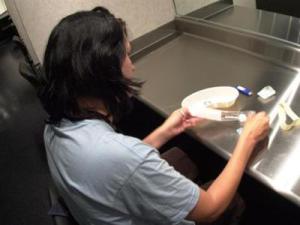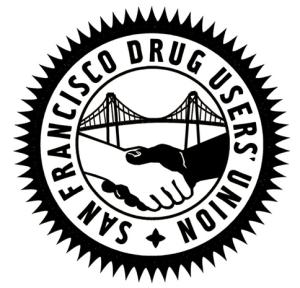The only existing supervised injection site for hard drug users in North America is Vancouver's Insite, but panelists at a session of the International Drug Reform Conference in Denver last month said activists in a number of US cities are working to be next. (Plans are also afoot in a couple of Canadian cities.)

SISs also exist in a number of European countries and Australia, but face both legal and political hurdles in the US. Still, advocates are ready to push the envelope here in a bid to bring the life-, health-, and money-saving innovation here.
Donald Macpherson, executive \director of the Canadian Drug Policy Coalition and former head of Vancouver's Four Pillars drug policy program explained the prehistory of Insite, offering hints of possible courses of action in the US.
"We had a public health disaster," he said, referring to the city's escalating heroin problem in the 1990s. "Drug users themselves opened an SIS in 1995, and the police watched it, but didn't shut it down. A second opened in 2002. A year later, another non-sanctioned injection site opened up. It was really messy and it took years."
But in the end, Vancouver ended up with Insite and has managed to keep it open despite the best efforts of the Conservative federal government in Ottawa.
"Insite survives because it has an exemption from Canadian drug laws," Macpherson explained. "We won in the British Columbia courts, we won in the Canadian Supreme Court, which instructed the health minister to issue a permit. But we still barely have Insite, and though other cities are working on it, there is a big chill in Canada right now and we're just trying to hang on to what we've got."
Plans for SISs in the US face similar obstacles, but that isn't stopping advocates in a number of cities -- notably Austin, New York City, San Francisco, and Seattle, as well as somewhere in New Mexico -- from pressing forward with plans to open them there.
"I don't know if we'll be first, but we'll be one of many," said Robert Cordero, president and chief program officer of Boom! Health in the Bronx.
Boom! Health, which resulted from the merger of Bronx AIDS Services and Citiwide Harm Reduction, is a multi-service organization with a three-story building that includes a pharmacy, pharmacists with a harm reduction orientation, and a seven-day-a-week drop in center.
"Safe injection would be embedded with all these other services," he said.
"I don't know if we want to be first, but we want to be one of many," said Olivia Sloan, outreach and education associate for the Drug Policy Alliance (DPA) in New Mexico, which has been working patiently to bring cutting edge programs like SISs to the state. "We passed harm reduction, including needle exchange, through the state legislature, but it's not working," Sloan said. "We have overdose deaths at four or five times the national average."
Advocates in New Mexico have been and continue to lay the groundwork for SISs, Sloan said.
"We took a political and academic approach, and our conversation about injection facilities started a few years ago," she explained. "We have mobile syringe exchanges. We drafted legislation last year and the Senate passed a memorial to require we study the feasibility of SISs in New Mexico. We have partnered with the University of New Mexico and are looking for a principal investigator."

"We have a committee very committed to an SIS that meets every Monday for two hours," said Holly Bradford, the union's coordinator. "We're really on the verge. We have a very active bathroom here; you just open the door," she smiled. We're bringing it to San Francisco," she said. "It might not be sanctioned or aboveground, but it's going to happen."
Whether underground or not, SISs face a hazard-strewn trek. State, local, or federal officials can throw up any number of obstacles, said Lindsay LaSalle, a Berkeley-based law fellow for DPA.
"Drug possession remains illegal and could impact any SIS user, although probably not the staff or operator because they're not handling the drugs," she explained.
"Then there are the crack house laws, which both the federal government and some states have. They make it illegal for anyone to maintain, own, lease, or rent a property where drugs are used, consumed, or manufactured. These laws could cover SISs, and this could impact both clients and staff and operators alike," she elaborated.
"Then there are civil forfeiture statutes. They've used them to go after medical marijuana dispensaries," she enumerated.
Winning local official support reduces some risks, but not all, LaSalle said.
"If SISs were sanctioned at the local level, many of the legal risks dissipate, but state actors could still choose to prosecute," she warned. "In most states, local officers are deputized to enforce state law, so they could still go after an SIS. If authorized at the state level, that would be an incredible victory, but we would still have to deal with the federal government."
While acknowledging that lawyers can be "a buzzkill," LaSalle also hastened to add that things can change faster than we think.
"These legal barriers are not so different from the challenges we've faced with other drug policy issues, like syringe exchanges," she noted. "They were seen as completely radical, but now we have an almost universally accepted public health intervention with the exchanges."
Part of the process of initiating a supervised injection site is selling it to other stakeholders. Panelists had a number of ideas about messages that worked.
"For business people, you tell them this is how we clean up the neighborhood," said a Seattle activist.
"It is a very incremental change from syringe exchange to supervised injection sites," said LaSalle. "Position it as a very small change in an organization that provides all these other services to drug users."
"There's always 'what we're doing is not working,'" said Sloan.
"We're not going to arrest our way out of this problem," suggested Cordero. "But don't go straight to the SIS conversation. Let people see what we're doing, and then they say 'you're doing God's work' and second, 'Holy shit! Where would all those people be if you weren't open?'"
The obstacles to implementing supervised injection sites in the US are formidable, but the need to do so is urgent and increasingly understood, as are the benefits. With activists and advocates in a number of American locales pursuing SISs through a variety of means, the question is not whether it will happen here, but when and where.
This work by StoptheDrugWar.org is licensed under Creative Commons Attribution-ShareAlike 4.0 International
Comments
we must do better
As a society, we must do better. The Clean safe sites are great because they create a constant opportunity to reach , teach, and help suffering addicts. narcan also saves lives for pennies.
How Many Lives Must We Destroy?
Alcohol is by far the strongest drug I ever took and I've shot heroin, smoked angel dust and took lots of pills. There is no reason to keep drugs illegal except that prisons make a profit and bureaucracies have come to depend on the taxpayer dollars. The U.S. imprisons more of its citizens than any country on earth. Non-violent drug addicted people who need treatment are instead thrown in prison with violent offenders and treated like garbage. They are put in "the hole" for infractions they did not even know were infractions until after they committed such heinous acts as my nephew did by making a joke asking a guard if the prisoners could use her cell phone because it was Mother's Day and the prison phones weren't working. He was simply trying to diffuse the tensions he felt building in the inmates. It was his first day in prison and he was sent to the hole for 45 days and had all his good time (from the county jail) taken away. He had no trial and no one to represent him. They did not give him a list of the rules. They just threw him in solitary.
What possible logical reason could we have for keeping drugs illegal? HBO did an awesome series on Addiction that explained what changes take place in the brain of an addict and how difficult it is to get off drugs and stay off. Alcohol kills far more people than drugs. Prescription drugs kill far more people than illegal drugs. We are sold a lot of propaganda in this country and believe drugs are evil....they are not. Greedy people might be evil...if there is such a think as evil.
Legalize
Full legalization would allow access to raw opium which is almost as safe as cannabis to smoke.
It really should be one of the options available to injection and medical users.
Add new comment